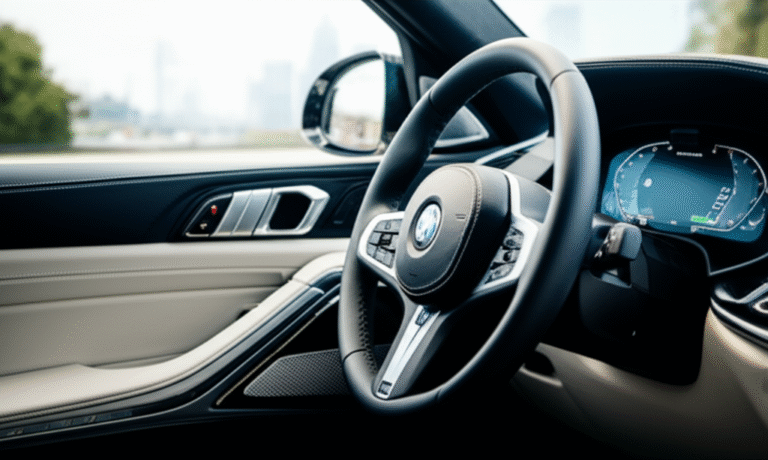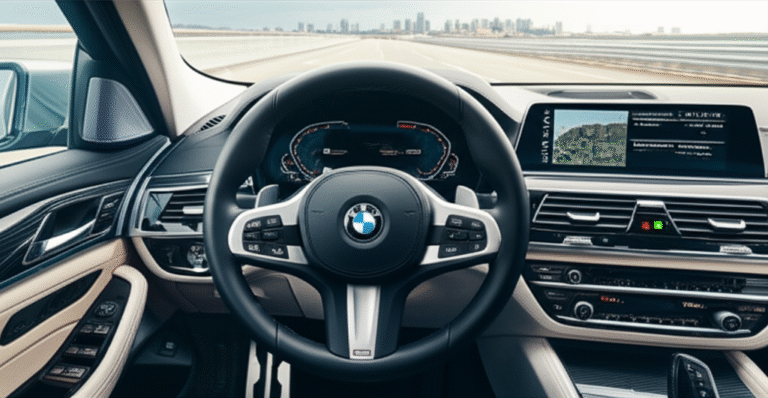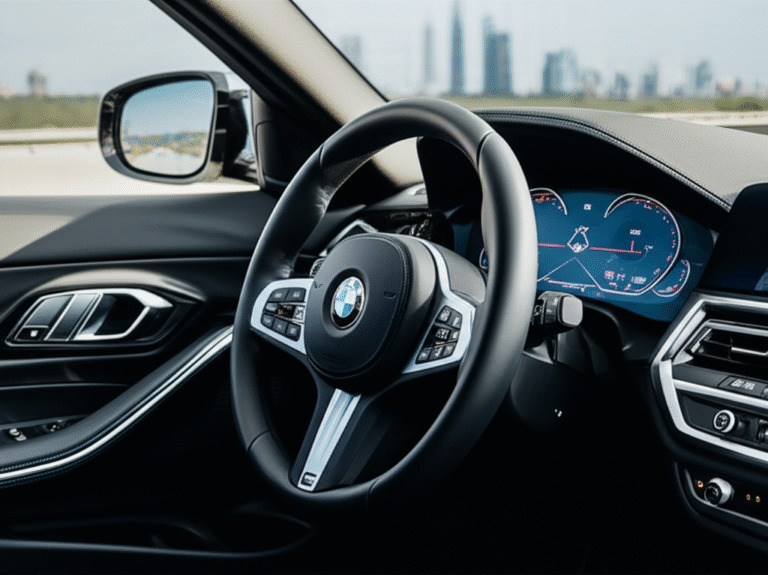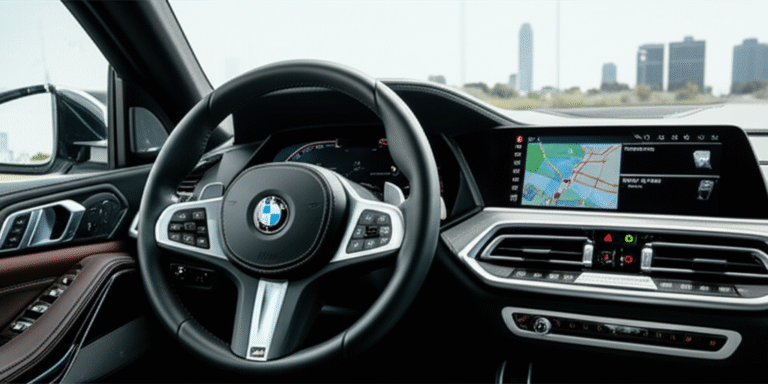BMW Blue Color Code: 5 Essential Codes
BMW Blue Color Codes: 5 Essential Codes Every Owner Must Know for Perfect Paint Matching and Restoration.
Key Takeaways
- Identify your BMW’s exact paint color.
- Locate the BMW paint color code easily.
- Understand the importance of genuine BMW paint.
- Find common BMW blue paint codes.
- Learn how color codes aid repairs.
Finding the right paint for your BMW can feel like a quest, especially when it comes to its stunning blue hues. Whether you’re touching up a minor scratch or planning a full restoration, knowing your BMW’s specific blue color code is essential. This code is your key to ensuring a perfect match, maintaining the car’s aesthetic appeal, and preserving its value. Without it, you risk a mismatched finish that can detract from your BMW’s signature style. This guide will simplify the process, making it easy for any BMW owner to find and understand these crucial codes. We’ll walk you through where to find them and highlight five essential BMW blue color codes you might encounter.
Understanding BMW Paint Color Codes
BMW, like most automotive manufacturers, uses a unique system to identify each paint color. This system ensures consistency and accuracy across their entire model range over many years. A BMW paint color code is typically a combination of letters and numbers, often found on a special sticker or plate within the vehicle. This isn’t just a name; it’s the precise formula the factory uses to mix that specific shade of paint. For example, a deep, sophisticated blue will have a different code than a bright, sporty blue. Understanding these codes is vital for anyone looking to perform bodywork, touch-ups, or even just order custom accessories in a matching color. It’s the difference between a seamless repair and a noticeable patch.
The importance of the color code cannot be overstated. When you take your BMW to a body shop for repairs, they will use this code to order the exact paint. Minor variations in shade can be very apparent on a vehicle’s surface, especially on a reflective finish like a BMW’s. Using the correct code ensures that the new paint will blend seamlessly with the original paintwork, maintaining the car’s factory-fresh look. This attention to detail is part of what makes owning a BMW a premium experience. Furthermore, when purchasing touch-up paint pens or kits, the color code is your most reliable guide to getting the right product.
Where to Find Your BMW Paint Color Code
Locating your BMW’s paint color code is usually straightforward. Most manufacturers place this information in a designated spot on the vehicle’s chassis. For BMWs, you’ll typically find this sticker in one of a few common locations. Understanding where to look will save you time and frustration. The most common place is the door jamb, specifically on the driver’s side. Open the driver’s door and look along the frame where the door latches. You’re searching for a sticker that often contains vehicle information, including the VIN, and crucially, the paint color code.
Another common location is under the hood. Sometimes, a sticker or a small metal plate will be affixed to the firewall or the strut tower. Less commonly, the code might be found in the trunk area, perhaps near the spare tire well or on the underside of the trunk lid. If you’re having trouble finding it on the vehicle itself, your BMW’s owner’s manual is another potential source. Alternatively, your local BMW dealership’s service department can usually look up this information for you using your vehicle’s VIN. They have access to comprehensive databases that detail every specification for every car they’ve ever produced.
The VIN and Your BMW Color Code
Your Vehicle Identification Number (VIN) is a unique 17-character identifier for your car. While the VIN itself doesn’t directly tell you the color code, it is the key to unlocking all the factory specifications for your specific BMW. Dealerships and many online VIN decoders can use your VIN to retrieve information about your car, including its original paint color and its corresponding code. This is a highly reliable method, especially if the stickers on your car have faded or become damaged over time. You can often find your VIN etched on the dashboard on the driver’s side, visible through the windshield, or on your insurance and registration documents.
Many online resources can help you decode your VIN. These tools can provide a wealth of information, from manufacturing date to optional features. Among these details, the paint code is usually listed. For example, checking a VIN decoder on sites like NICB.org (National Insurance Crime Bureau) can offer insights into your vehicle’s history and specifications. While NICB focuses on theft and recovery, other specialized VIN decoders can provide more detailed manufacturing data, including the paint code. This is an excellent fallback if you can’t locate the sticker on your car.
What Does a BMW Paint Color Code Look Like?
BMW paint color codes are typically short, consisting of a few letters and numbers. They are not usually descriptive names like “Alpine White” or “Midnight Blue” directly on the code itself, but rather a specific alphanumeric identifier. For instance, a common code might be “300” for Alpine White, or “475” for Black Sapphire Metallic. For blue colors, you’ll find a range of these identifiers. These codes are crucial because “Midnight Blue” could be a name used by multiple manufacturers, or even by BMW across different eras with slightly different formulations. The code ensures you get the exact shade BMW intended.
The sticker where the color code is found usually has several pieces of information. You’ll typically see the VIN, and often a list of options or features with their own codes. The paint color code is usually clearly labeled, perhaps as “Farbe” (German for color) followed by the code, or simply “Color Code.” It’s important to note that BMW sometimes uses interior and exterior color codes on the same sticker. Make sure you are identifying the exterior paint code. The exterior paint code is the one relevant for bodywork and touch-ups. Some codes might be followed by an additional number or letter, which can indicate a variation or a special finish, but the primary code is what you need for ordering paint.
5 Essential BMW Blue Color Codes Every Owner Must Know
BMW offers a wide spectrum of stunning blue paints. While there are many, some are more iconic and frequently encountered than others. Knowing these common codes can be incredibly helpful, whether you’re browsing used BMWs or need to communicate with a paint supplier. Here are five essential BMW blue color codes that every owner should be aware of, representing different shades and popular choices:
1. BMW 300, Alpinweiss III (Alpine White III)
Wait, wasn’t this a blue color code article? You might be thinking that. While Alpine White is BMW’s quintessential white, it’s often paired with blue accents or is a common base color for many BMWs that do have blue elements. More importantly, it serves as a benchmark for understanding BMW’s coding system. many owners mistakenly search for descriptive names rather than the code. The code “300” is for Alpine White III. This is one of the most recognizable BMW colors, a crisp, pure white. While not blue, understanding its code “300” helps illustrate the alphanumeric system. For example, if you see the code “300” on your sticker, it’s this iconic white, not a blue. This is a common point of confusion and knowing it helps you avoid ordering the wrong color. Many classic BMWs, and even modern ones, feature this color, and it’s important to distinguish it from actual blue shades.
2. BMW 475, Schwarz (Black Sapphire Metallic)
Another common and popular color, Black Sapphire Metallic is a deep, lustrous black with subtle blue undertones that become apparent in direct sunlight. The code “475” is for this sophisticated shade. It’s a favorite for its ability to look both elegant and sporty. When this paint is exposed to light, you can see hints of deep blue shimmer, making it a unique choice for those who want a dark color with a bit of flair. This color is prevalent across many BMW models, from sedans to SUVs. If your BMW has a dark, metallic finish that seems to have a hint of blue in certain lights, there’s a good chance it’s Black Sapphire Metallic. This code is essential for anyone with this particular finish.
3. BMW A34, Monaco Blue Metallic
Monaco Blue Metallic is a classic, deep, and elegant blue that screams luxury. With the color code “A34”, this paint offers a rich, sophisticated tone that is highly sought after. It’s a darker shade of blue, reminiscent of the deep ocean, and it possesses a metallic flake that gives it depth and sparkle under light. This color is often found on executive sedans and coupes, enhancing their premium feel. It’s a timeless choice that rarely goes out of style. If you’re looking for a refined, luxurious blue for your BMW, Monaco Blue Metallic is a prime example. Its code, A34, is widely recognized by paint specialists.
4. BMW A52, Space Grey Metallic (often mistaken for blue undertones)
While Space Grey Metallic is technically a shade of grey, its name and its rich, deep tones can sometimes lead people to perceive blue undertones, especially in certain lighting conditions. The code for this popular color is “A52”. It’s a sophisticated, modern grey that can appear almost charcoal or even a very dark, muted blue under specific light. This ambiguity makes it important for owners to know the exact code. If your BMW has a dark, metallic grey finish that sometimes looks like it has a hint of blue, it’s likely Space Grey. Understanding this code helps differentiate it from genuinely blue paints and ensures accurate ordering for repairs or touch-ups. Many M Sport models feature this color, highlighting its dynamic appeal.
5. BMW 440, Stratus-Grau (Stratus Grey Metallic)
Similar to Space Grey, Stratus Grey Metallic (code “440”) is another popular metallic grey that can exhibit subtle blue or violet undertones. This color offers a refined, understated elegance. It’s a mid-tone to dark grey with a fine metallic shimmer that can catch the light and reveal subtle color shifts. While primarily grey, it’s a common point of confusion for those seeking specific blue shades, as its depth can be mistaken for a very dark, desaturated blue. Knowing the code 440 is crucial to ensure you are ordering the correct grey and not mistaking it for a pure blue. This is particularly relevant for owners of older BMW models or certain special editions where this shade was prevalent.
How to Use Your BMW Blue Color Code for Paint Repairs
Once you have identified your BMW’s blue color code, using it for paint repairs is the next logical step. The code is the universal language that paint shops and auto parts stores understand. When you need to touch up a scratch, repair a dent that requires repainting, or even repaint a whole panel, you will provide this code. The paint supplier or body shop will then use specialized mixing equipment to create a batch of paint that precisely matches your BMW’s original finish.
For DIY touch-ups, you can purchase touch-up paint pens, spray cans, or even larger quantities of paint directly from automotive paint suppliers online or at specialty stores. Always ensure you are ordering based on the exact BMW paint code. It’s also wise to purchase a clear coat to go with your base coat, as this will protect the paint and give it the factory shine. Many kits include a primer, base coat, and clear coat all designed to work together. The process typically involves cleaning the damaged area thoroughly, applying primer if necessary, spraying or brushing on the base coat (your blue color), and then applying the clear coat. Patience and careful application are key to a professional-looking result.
Paint Codes vs. Names: Why the Code is King
While BMWs have evocative names for their colors, like “Estoril Blue” or “Le Mans Blue,” these names alone are not sufficient for accurate paint mixing. Color names can be subjective, and manufacturers may use similar names for different shades over time or across different model lines. The alphanumeric code, on the other hand, is a scientifically precise identifier. For example, there might be multiple BMW blues with “15-year” in their name, but only one will have the specific code that matches your car. This is why relying on the code is paramount. A paint professional will always ask for the code, not just the color name, to guarantee a perfect match. This is especially true for metallic and pearl finishes, where the subtle interplay of pigments and flakes is critical.
Consider “Estoril Blue.” This is a highly desirable color, but there can be nuances. The specific code ensures you get the exact shade. Relying on the name alone could lead to a color that looks similar but is ultimately different, creating a visible mismatch when applied. The same applies to any blue BMW color. The code is the definitive specification, ensuring that the paint mixed for your repair is chemically identical to the paint originally applied to your vehicle. This meticulous approach is part of the BMW ownership experience, where every detail matters.
Pro Tip:
When ordering touch-up paint, always buy a little more than you think you’ll need. This allows for practice coats and ensures you have enough for the repair and any subsequent touch-ups down the line.
Matching Metallic and Pearl Blues
Metallic and pearl paints add a level of complexity to color matching. These finishes contain fine metallic flakes or pearlescent pigments that create depth, shimmer, and color-shifting effects. Accurately replicating these effects requires precise control over the paint mixture and application technique. This is where the BMW color code is absolutely critical. It specifies not just the base color pigment but also the type and amount of metallic or pearl agents to be included.
When you take your BMW for professional repair, skilled technicians use specialized spray equipment and techniques to ensure the metallic flakes are oriented correctly. This helps the repaired area blend seamlessly with the surrounding panels. For DIYers, using a spray can or pen with the correct code is the best bet. However, achieving a perfect match with metallic or pearl finishes can still be challenging due to variations in applicator pressure, spray distance, and environmental conditions. It’s often recommended to paint entire panels rather than just small spots when dealing with these complex finishes to minimize the risk of unevenness.
A good way to check the paint on your car as a reference is to look at it in natural, indirect light. Avoid direct sunlight or harsh artificial lights initially, as these can distort your perception of the color. Observe the flake size and distribution. Then, expose it to direct light to see how the metallic or pearl effect comes alive. This observation helps you communicate more effectively with your body shop or paint supplier about what you’re looking for, even if you’re just providing the code. For example, you might describe your blue as having a “fine, silvery flake” or a “deep, almost iridescent shimmer.”
The Importance of Genuine BMW Paint
While aftermarket paint brands can offer a wide range of colors, using genuine BMW paint or high-quality paint specifically mixed to BMW’s specifications is often recommended, especially for metallic and pearl finishes. Genuine BMW paint is formulated to meet the manufacturer’s exact standards for color accuracy, durability, and finish quality. These paints are designed to interact perfectly with BMW’s primers and clear coats, ensuring the best possible adhesion and longevity. This is particularly important for luxury vehicles like BMWs, where maintaining the original factory finish is a priority for aesthetics and resale value.
When you purchase touch-up paint or order custom mixes, always ensure the supplier is reputable and can provide paint based on the official BMW color code. You can often find official BMW touch-up pens or bottles through BMW dealerships or specialized online BMW parts retailers. These sources guarantee that you are receiving paint that has been formulated directly to BMW’s specifications. While they might be slightly more expensive than generic options, the assurance of a perfect match and long-lasting finish is usually well worth the investment for a vehicle like a BMW. For example, purchasing a touch-up pen from a source like ECS Tuning, a well-known BMW parts specialist, provides confidence in product authenticity.
Table: Common BMW Blue Paint Codes and Names
Here is a table showcasing some popular BMW blue paint codes and their common names. Please note that color names can sometimes vary slightly or have associated variations.
| BMW Color Code | Common Color Name | Notes |
|---|---|---|
| A34 | Monaco Blue Metallic | A deep, rich, and elegant dark blue. |
| 440 | Stratus-Grau (Stratus Grey) | A sophisticated grey with potential subtle blue undertones. |
| 899 | Estoril Blue II | A vibrant, sporty, and highly sought-after bright blue. |
| W24 | Le Mans Blue Metallic | A classic, striking bright blue with metallic flakes. |
| 381 | Geyser Blue Metallic | A distinctive, somewhat lighter and brighter metallic blue. |
| 668 | Schwarz 2 (Black 2) | A solid black, but sometimes confused with darker blues due to its depth. |
| A96 | Mineral White Metallic | While white, often paired with M Sport packages that feature blue accents. |
It’s important to remember that some colors, like “Schwarz 2” (668) or “Mineral White Metallic” (A96), are not strictly blue but are listed here because their names can sometimes lead to confusion or they are common colors on performance models that might feature blue accents. Always cross-reference the code with your vehicle’s sticker.
Frequently Asked Questions (FAQ)
Q1: Where is the paint code sticker on my BMW?
A1: The most common location is on the driver’s side door jamb, on the frame where the door latches. Other potential locations include under the hood (firewall or strut tower) or in the trunk. If you can’t find it, check your owner’s manual or contact a dealership with your VIN.
Q2: Can I use a general automotive paint code for my BMW blue?
A2: It’s highly recommended to use the specific BMW paint code. BMW paint formulations, especially for metallic and pearl finishes, are unique and precisely matched to the factory standard. Generic codes may result in a noticeable color mismatch.
Q3: What if my paint code sticker is damaged or missing?
A3: Your BMW’s VIN is the key. You can use online VIN decoders or contact a BMW dealership’s service department. They can look up your car’s original specifications, including the paint color code, using your VIN.
Q4: How do I know if my BMW blue is metallic or solid?
A4: Metallic paints contain small, reflective metal flakes, giving them a shimmer. Solid paints are a uniform color without these flakes. You can usually tell by looking at the paint in direct light; metallic finishes will sparkle. The color code itself often helps distinguish this, but visual inspection is key.
Q5: Can I mix my own BMW blue paint if I have the code?
A5: While possible with specialized equipment and knowledge, it’s incredibly difficult to achieve an exact match for metallic or pearl finishes without professional-grade tools and expertise. It’s generally best to have paint mixed by a professional paint supplier or purchase a pre-mixed touch-up kit from a reputable source using your BMW’s code.
Q6: What’s the difference between “Estoril Blue” and “Le Mans Blue”?
A6: Both are popular, vibrant BMW blues, but they have distinct shades. Estoril Blue (often 899 or similar codes) is typically a brighter, slightly more electric blue, while Le Mans Blue (often W24) is a deep, rich competition blue. Always rely on the specific color code for accuracy.
Q7: Will a computer color match be accurate for my BMW blue?
A7: Modern computer color-matching systems are very advanced and can produce excellent results, especially when used with the correct BMW color code. However, factors like paint fading over time or variations in original application can mean that a perfect match might require slight adjustments by an experienced painter.
Conclusion
Navigating the world of BMW paint colors, especially the coveted blues, doesn’t have to be a challenge. By understanding and utilizing your BMW’s specific color code, you unlock the ability to maintain its pristine appearance, perform flawless repairs, and preserve its value. Whether you’re dealing with an iconic Monaco Blue Metallic (A34), a sporty Estoril Blue II (899), or any other shade, the code is your most reliable guide. Always prioritize finding this alphanumeric identifier on your vehicle’s sticker or by using your VIN. This simple step ensures that any touch-up or repair work will blend seamlessly, keeping your BMW looking as stunning as the day it rolled off the assembly line. Embrace the precision of BMW engineering, starting with its paint.




